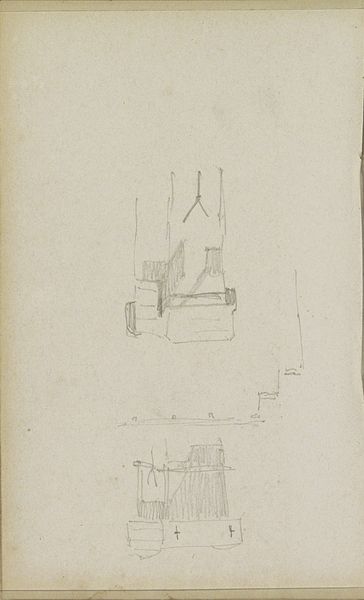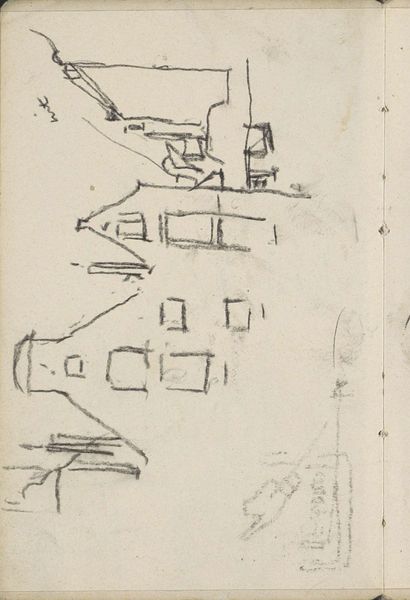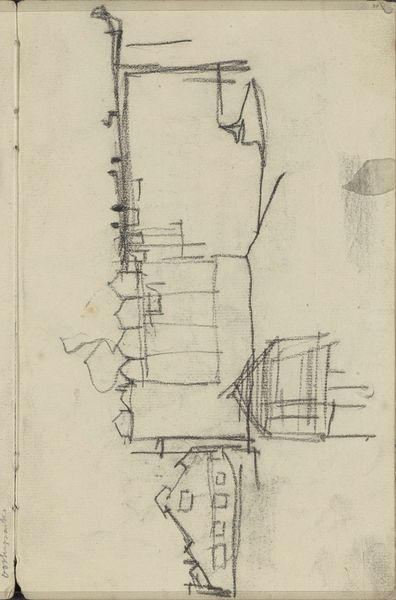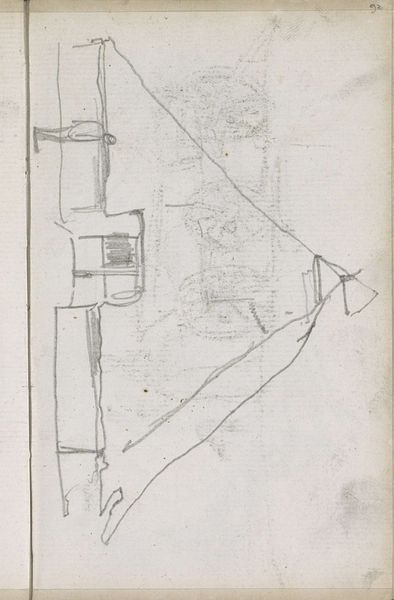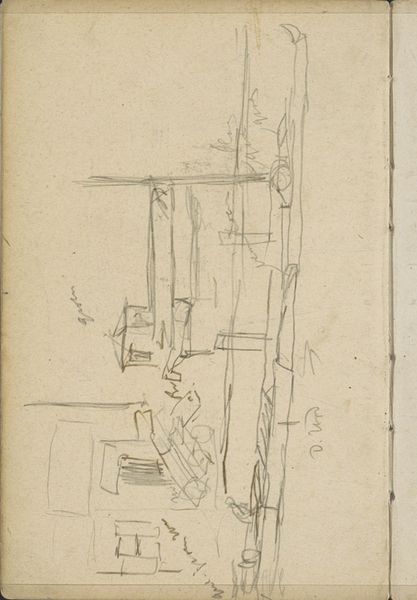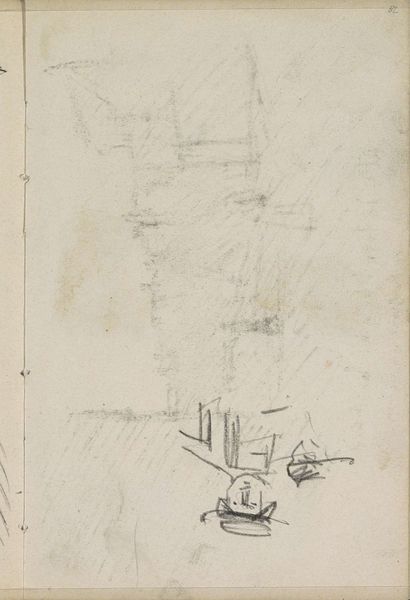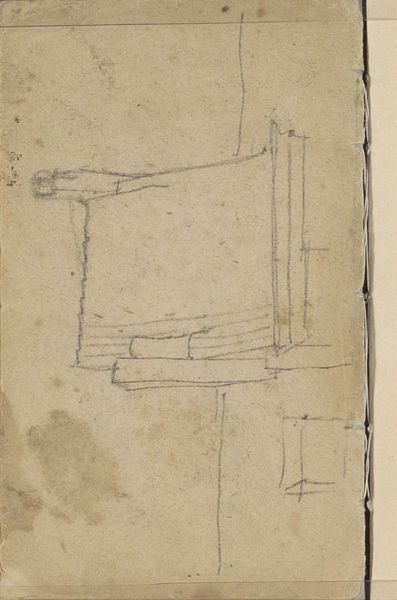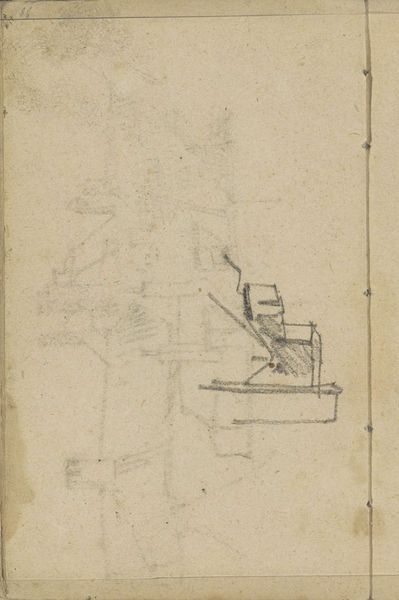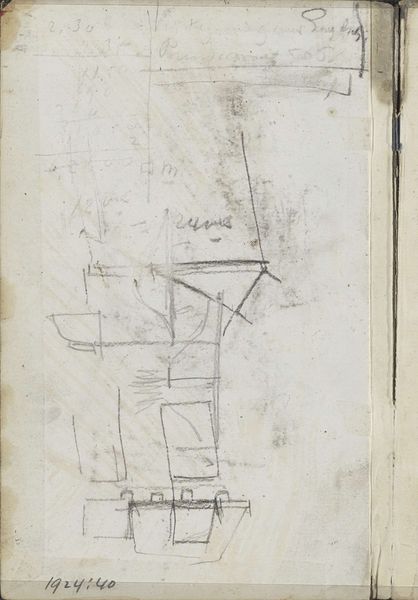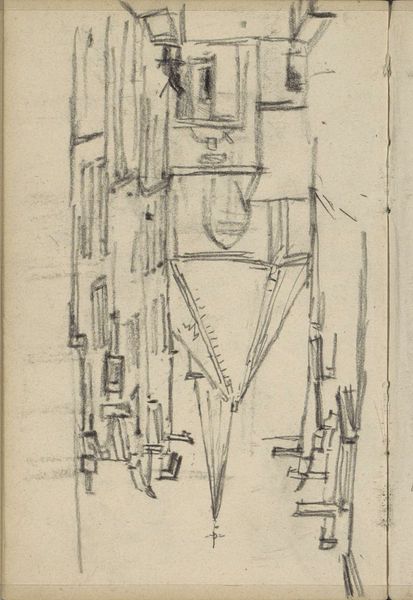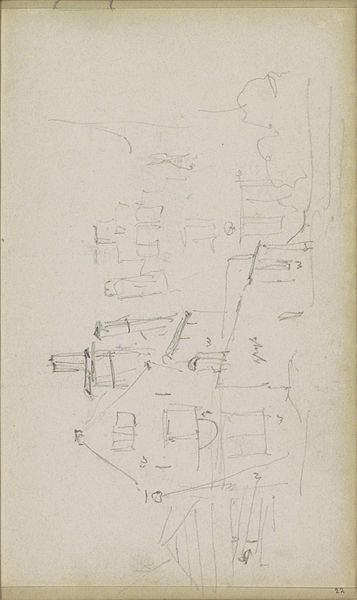
Studieblad met een kar, schoorstenen en hijsblokken 1880 - 1882
0:00
0:00
drawing, pencil
#
drawing
#
aged paper
#
quirky sketch
#
impressionism
#
sketch book
#
personal sketchbook
#
idea generation sketch
#
sketchwork
#
pencil
#
sketchbook drawing
#
cityscape
#
storyboard and sketchbook work
#
sketchbook art
#
initial sketch
Copyright: Rijks Museum: Open Domain
Editor: Here we have George Hendrik Breitner's "Studieblad met een kar, schoorstenen en hijsblokken," a pencil drawing from around 1880-1882. It feels almost like a memory, a fleeting glimpse of an industrial scene. What first catches your eye? Curator: The quick, almost frantic lines pull me in. Notice how the chimneys and block and tackles are rendered not with precision, but with a kind of energetic shorthand. To me, they speak to a moment in time where industry was rapidly transforming the landscape – a sense of change that would be burned into cultural memory. What do those sharp, angular forms suggest to you? Editor: A sense of starkness, maybe even a bit ominous. I suppose because these shapes could become looming structures on the environment and inhabitants. But that can't be everything, right? Curator: Indeed. But that also suggests its symbolic charge. Consider how these images—carts, chimneys—functioned in the popular imagination of the late 19th century. They represent not just labor, but also progress, modernity, even anxiety about a changing world. How do you see that anxiety manifest here, visually? Editor: Perhaps it’s the incompleteness of the sketch? It feels unfinished, like the city itself is still under construction and changing rapidly? The lines even seem to cross out and interfere. Curator: Precisely. Breitner captures that sense of becoming. Notice how these industrial motifs recur throughout his work, almost as a visual signature. How do you think his consistent return to these themes shaped the narrative around industrialization at the time? Editor: It's like he’s embedding this new urban landscape into our collective consciousness, almost forcing us to confront it. Thank you for bringing up the idea of collective memory! I would not have seen those links if I had seen this work alone. Curator: It is in precisely those interconnections and those shared experiences that we come to more fully understand what the drawing shows and symbolizes for us today.
Comments
No comments
Be the first to comment and join the conversation on the ultimate creative platform.
